There is an important distinction between fishing to spawning trout and char and fishing during the spawn. There’s absolutely nothing wrong with the latter, but practicing the former might get you drawn and quartered in some parts of the country where casting over active redds means you might be pulling big fish away from a nest or a mate.
Fishing to spawning fish means an angler is intentionally targeting trout or char as they rest on spawning redds, often paired up with a mate and in the active throes of piscine passion. Let’s assume we’re all on the same team here. This is bad form, particularly if you’re chasing wild or native fish in waters where the fish are desirable and the population is replenished via this biologically necessary process.
But fishing during the spawn often means something entirely different. More often than not, anglers are targeting the fish that gather to take advantage of their spawning cousins — think rainbows in October that might be lying in wait behind spawning browns in order to gulp an egg or two. Or browns that harass spawning rainbows in the spring in hopes of returning the favor.
And then there’s the pre-spawn migration — when fish begin moving in anticipation of the annual spawn — which can be a good time to tie into bigger fish as they move upstream to find a mate.
Unfortunately, for anglers trying to err on the side of caution and avoid fish that are in the act of spawning, things can get a bit complicated. So, here’s a simple primer intended to demystify spawning trout and char.
Know your redds
If you are fishing in a river or stream that sports generally clear water, identifying spawning redds is easy. Redds, or nests, are visibly “cleaner” than the surrounding stream or river bottom, and they are usually located where there’s a mix of fine gravel and larger cobble. Trout, char and salmon all spawn in water that is highly oxygenated, so the redds will very likely be in moving water.
If you’re walking and wading, take care to keep an eye open for active redds — they’ll be freshly swept of algae and the smaller rocks will likely have been rolled over by pre-spawn fish as they prepare to make a nest for the eggs. An average trout or char redd might be about the size of your bathtub, and, during the peak of the spawn, it’s not uncommon to see fish on the redds either engaged in spawning or protecting their eggs. Brown trout, for instance, are fierce guardians of their redds, particularly after the spawn (and they can be easily coaxed to chase a streamer as a result). As a rule, if you see fish on a redd, it’s best to leave them be.
Two things to understand about redds. First, just because you don’t see fish on the redds doesn’t mean the fish aren’t actively spawning. Often, particularly in the lower-water periods of the fall, brown trout and brook trout are more likely to engage in the actual spawning during periods of low light or even at night, just to protect themselves from predators. Second, a redd empty of fish could very likely mean that trout or salmon eggs are present in the cobble-and-gravel riverbottom. If you’re wading, be sure to wade around the redds.
When do trout and char spawn?
Brown trout
Browns are fall spawners, and, depending on the location, will start migrating to spawn as early as mid-September. By the middle or end of October, browns have arrived in their spawning waters, they’ve constructed redds and are likely in active spawning mode. They’re usually done by the beginning of December and headed back down to bigger or deeper waters where they can enjoy more security and spend the winter recovering from the reproduction effort. Browns mature sexually usually by the time they are three or four years old.
Rainbow trout
Rainbows are spring spawners, but in many instances, rainbows will begin their migration to their spawning redds in the fall (this is particularly true of rainbows that might have some steelhead genetics in their makeup—these fish will run upstream, often alongside browns, and overwinter in their spawning waters before actually pairing up and spawning). Rainbows can begin spawning as early as February in some rivers and streams, and by March or April, they’re generally in full spawn, when water temperatures have topped 41 degrees or so. Rainbows (not steelhead, mind you), are usually sexually mature between the ages of two and four.
Cutthroat trout
Cutthroat trout native to the West are spring spawners, just like rainbows. Cutthroats generally spawn a bit later than their rainbow trout cousins — west slope cutthroats native to the Northwest often wait until water temperatures hit 50 degrees before actually spawning — but often, their spawning seasons overlap with rainbows. The two trout species can mingle on the redds, and this results in a fertile hybrid often called a cutbow. In some places around the West, native cutthroat trout are in real peril thanks to hybridization with non-native rainbows. Most cutthroats don’t reach sexual maturity until they’re at least four years old.
Brook trout
Brookies are a subspecies of char, and they are fall spawners. Depending on where you find them, they can spawn anytime from September through November. On average, though, October is the sweet spot for brook trout in both their native and adopted ranges. Brookies are generally at least two years old when they spawn, but there is data that suggests some brookies can spawn after just one year.
Arctic grayling
Grayling are spring spawners, but they tend to get an earlier start than their rainbow or cutthroat salmonid cousins (yes, grayling are related to trout and salmon). In their native ranges, they are known to spawn under high water conditions, and fluvial grayling that move between rivers and lakes have been known to run either upstream or downstream into rivers and streams when ice is still present on lakes. Still other populations wait for later spring or even early summer to spawn. One note about grayling: these fish don’t become sexually active until they’re at five years old, and some don’t spawn until they’re seven years old.
Bull trout
Bull trout are native to the Northwest and they are a char related to brook trout, Dolly Varden and Arctic char. In their native watersheds, bull trout migrate into smaller tributaries sometimes as early as July and they begin spawning as early as mid- to late August. Bull trout don’t reach sexual maturity until they’re at least four years old, and sometimes not until they’re seven years old. They can live as long as 12 years, and they can grow to 30 inches or longer.
Caution is king
By staying away from redds and fishing at certain times of the year, most anglers can reasonably avoid fishing to trout and char (and grayling) as they’re actually spawning. But fishing during spawning season, when fish are moving, active and aggressive, can be very rewarding. Keep an eye open for redds, and fish that are paired up and avoid both. Remember, too, that spawning fish often attract other trout and char that eat eggs and fry — imitating eggs and small baitfish are great ways to catch hungry trout.
If you live near prolific salmon runs, some of the best rainbows of the year can be caught on egg patterns as the salmon are spawning all round them. In the spring, in rivers where rainbows and browns overlap, drifting egg patterns or swinging brightly colored streamers shades of red, orange and pink can often result in the biggest catches of the season. Rainbows and cutthroats, in waters where brown trout and brook trout live, can be caught using the same methods.
But fishing during the spawn is a nuanced proposition, and many anglers avoid it entirely. That’s likely not necessary, but being cautious is a perfectly fine option. Knowing when trout and char spawn, what lives in the waters you fish, and how to identify spawning redds can greatly reduce your chances of pulling mating fish off their nests.




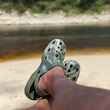

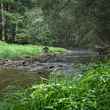




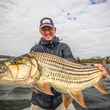




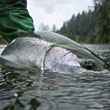





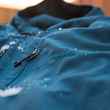




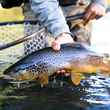


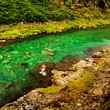
Comments
JJ replied on Permalink
Good Article
Pages